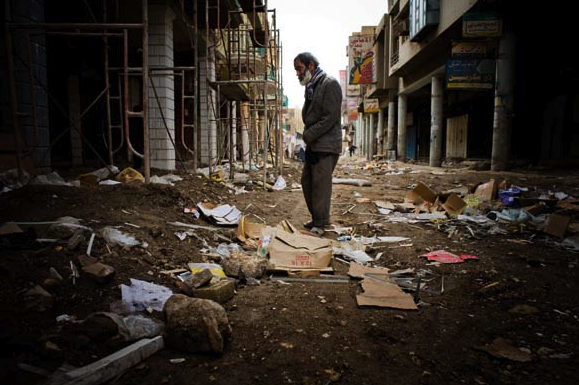Several days ago we talked about the “faces of death” in Iraq. Today I want to talk about the costs of that war. The obvious costs are astonishing. Over 4,000 American personnel dead with at least seven times that number injured—and this doesn’t include those inflicted with some version of PTSD—and an additional 90,000 Iraqi deaths plus who knows how many injuries. Some media outlets have scandalously reported that this is far few casualties than in comparable wars in the past, but the number remains stunning, all the more so for a war fought under false pretenses. Locating the costs in dollars and cents is no less stunning. Through 2007 the war has cost 522 billion dollars; that’s $1,800 for every resident of the U.S. and it doesn’t take into account the 70 billion dollars already allocated for 2008 with no end in sight. But as I say above, these are the obvious costs.
But there are other costs, no less shocking or troubling, even if words to describe them are harder to come by and if we have to look harder to see them.
I came across this picture in the Guardian while meeting with some friends at the coffee shop in my local Borders Bookstore. It looked like just one more of the numerous pictures of destruction that we see quite regularly coming out of Iraq and to which, if you are like me, you have become somewhat anesthetized. And then I read the caption: “A man stands in the Mutanabi books market [Baghdad], once a thriving intellectual hangout.” Sitting in a book store where I regularly meet with friends and colleagues to discuss the events of the day I was struck by the irony that what I was looking at was not just the tragic destruction of an ancient and majestic city, but the obliteration and erasure of civil society itself. With enough money and manpower cities can be rebuilt, but without the obligations and social capital generated by the relationships cultivated by civil society they are barren places; totally devoid of affiliation with friends and strangers alike, they are little more than political and economic facades that ultimately leave us alienated and alone, rather like the old man in the photograph, searching in vein for some sense of meaning lost amidst the wreckage of history.
But the cost of war exceeds even the destruction of civil society.
I have seen many photographs of the war in the past five years that have had a strong effect upon me, but few have been as poignant or as troubling as this AP image of an Iraqi girl who “checks out the damage” of a suicide car bomber that killed 7 and wounded 14 more. The girl cannot be more than nine or ten years old. Her smock and blouse are neat and clean, and her hair is carefullly braided and adorned with yellow ribbons. And, of course, she is eating ice cream, surely one of life’s simplest pleasures, especially for children. She belongs in a park playing with friends, or perhaps in a schoolroom somewhere. But here, instead, she is framed by the remains of an insane act of destruction. What makes the picture so deeply troubling is that I cannot avoid the conclusion that what I am looking at is not the picture of innocence but a horrifying portrait of the utter normalization of war. She “checks out” the damage of a suicide bomber with the same nonchalant curiosity that my own young daughter would display when noticing a simple car crash for the umpteenth time: Interesting to be sure, but nothing she hadn’t seen before or didn’t anticipate seeing again—a mere fact of life, something to “check out” in passing, but certainly nothing to disrupt the pleasures of eating ice cream. One can only imagine with dismay how the young girl in the photograph will “see” the world as an adult.
No more tragic than the loss of lives, the scenes on display in these two photographs are no less tragic either, and perhaps all the more so because we so seldom include such scenarios in the ledger when we calculate war’s bottom line. But if we look real closely we can surely see the devastating effects of war’s silent costs. And we should mourn. And we should be horrified.
Photo Credits: Ghaith Abdul-Ahad and AP


Or to put in the words of our beloved VP… “So?”
Costs of War…
From No Caption Needed:
Sitting in a book store where I regularly meet with friends and colleagues to discuss the events of the day I was struck by the irony that what I was looking at was not just the tragic destruction of an ancient and maje…..
Another, equally important and often overlooked, silent cost
http://indyweek.com/slideshows/TheLongestRoadHome/
[…] Lucaites wrote an interesting post today on The Silent Costs of WarHere’s a quick excerptIt looked like just one more of the numerous pictures of destruction that we see quite regularly coming out of Iraq and to which, if you are like me, you have become somewhat anesthetized. And then I read the caption: “A man stands in … […]
Perfect work!